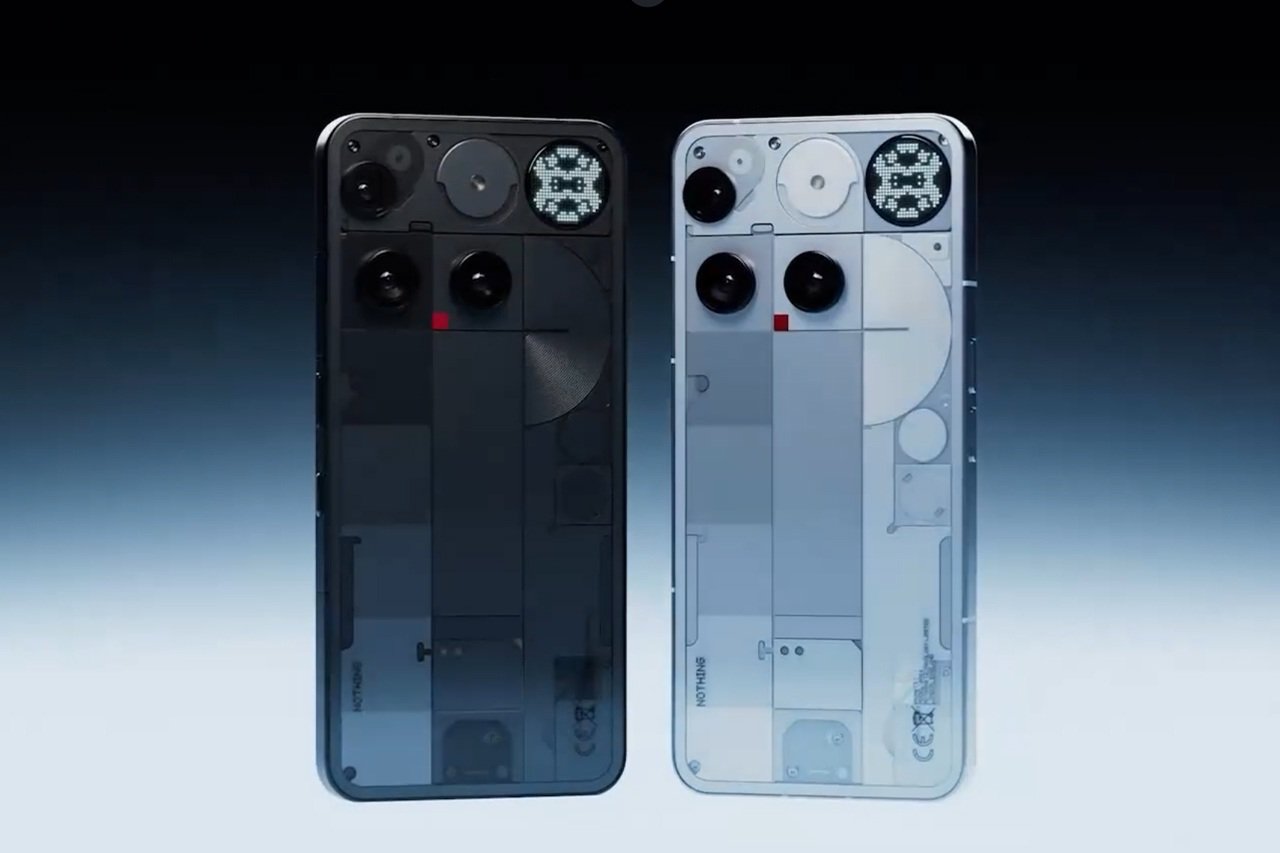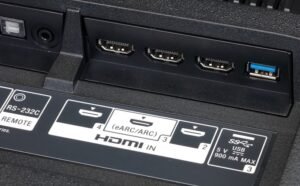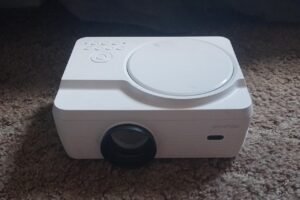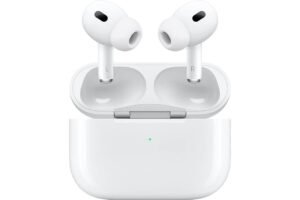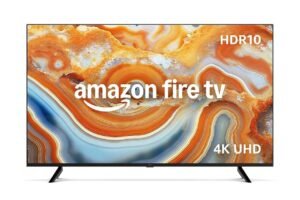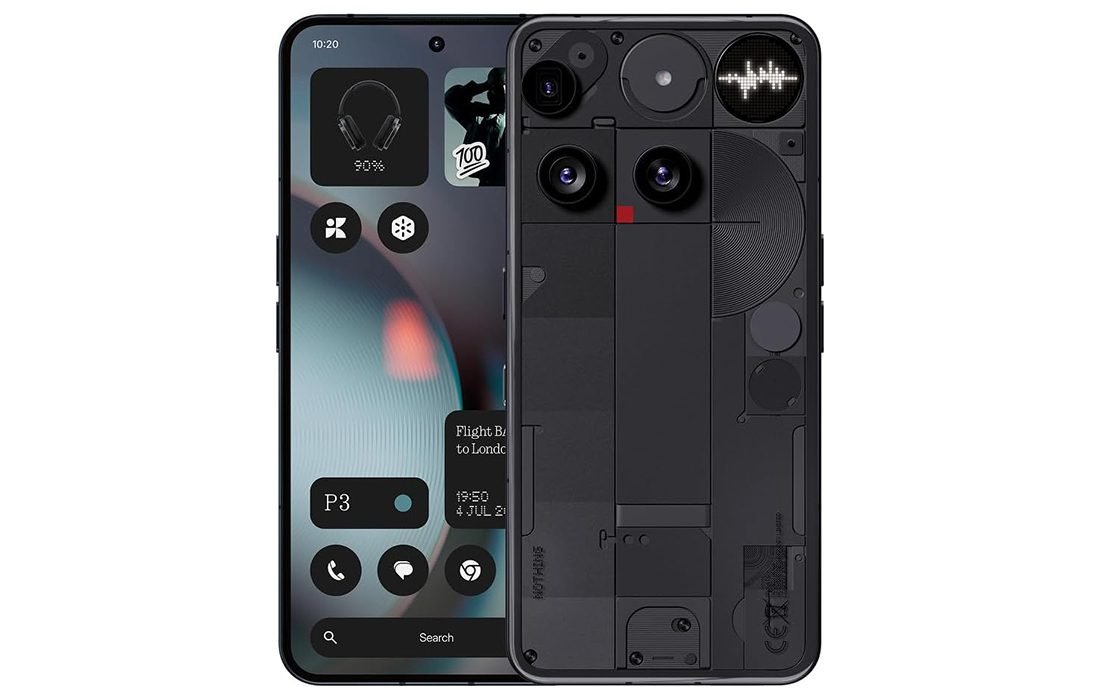
Nothing Phone (3) — 50MP Quad Cameras & 120Hz AMOLED
Our take: a distinctive, fast Android with Snapdragon 8s Gen 4, a 4500-nit display, and a dependable 5150mAh battery—built for creators and everyday power users.
- Snapdragon 8s Gen 4 + LPDDR5X & UFS 4.0 for smooth gaming, 4K edits, and instant app switching
- 6.67″ 1.5K AMOLED at 120Hz, 4500-nit peak brightness, 1000Hz touch, IP68 durability
- Four 50MP cameras incl. OIS periscope; Ultra XDR 4K video, Night & Portrait Optimiser
- Chipset
- Snapdragon 8s Gen 4 (3.2GHz, 4nm)
- Display
- 6.67″ 1260×2800 AMOLED • 120Hz
- Cameras
- 50MP Main + Periscope + Ultra-wide + 50MP Selfie
- Battery
- 5150mAh • Fast Charge • 15W Wireless
If you’ve followed Nothing’s rise from a bold upstart to a design-first Android brand, the Phone (3) feels like a statement piece. It keeps the transparent aesthetic and playful Glyph light language the company is known for, then layers on a modern 4nm Snapdragon 8s Gen 4 chipset, four 50MP cameras, and a far brighter 6.67-inch AMOLED display. The result is a phone that looks instantly recognizable yet performs like a top-tier daily driver.
This review takes the Phone (3) out of the bubble of launch hype and into real life. I spent time shooting photos and 4K video, commuting with GPS running, gaming in short bursts, and living with the new Essential Key, Essential Space, and refreshed Glyph interface. What emerged is a device that nails the day-to-day fundamentals, sprinkles in a few delightful party tricks, and occasionally reminds you it’s still forging its own path versus copying the usual suspects.
Nothing has always traded on personality, but Phone (3) backs up the vibe with substance. The display is meaningfully brighter, the touch response is dramatically faster, the cameras are more versatile thanks to the periscope, and the 5150mAh battery plus fast charging finally give the stamina enthusiasts have asked for. Toss in IP68 durability and a cleaner, more helpful Nothing OS on Android 15, and you’ve got a phone that feels mature without losing its spark.
Is Nothing Phone (3) for you?
If your checklist starts with “distinctive design, flagship-class smoothness, and a camera that can flex for travel, food, and portrait shots,” you’re exactly in the Phone (3) wheelhouse. The Snapdragon 8s Gen 4 provides confident performance for creatives and gamers alike, and the 120Hz AMOLED panel with 1000Hz touch response makes scrolling, sketching, and quick-fire taps feel immediate. The revamped Glyph Matrix remains more than decoration; it’s a subtle glanceable system for notifications, timers, and utilities.
It’s also a very good content creation tool. The all-50MP camera array—main with OIS, periscope with OIS, ultra-wide, and a 50MP selfie—delivers sharp detail and flexible framing. Ultra XDR 4K video, Portrait Optimizer, Motion Capture, and improved Night Mode elevate both photos and clips with minimal fuss. If you’re the family documentarian or the friend who always “gets the shot,” you’ll appreciate how often the Phone (3) simply nails it.
That said, the Phone (3) isn’t a compact device, and the aesthetic may not be for everyone. If you want ultra-conservative styling, a petite form factor, or the absolute best low-light processing in the class every single time, competitors may trade more aggressively on those edges. Wireless charging is supported (15W) with 5W reverse wireless charging, but if you live and die by the fastest possible wireless speeds, keep that in mind.
In terms of budget, Phone (3) lives in the premium mid-range to upper tier rather than entry level. The upside is clear: build quality, display tech, and performance are all a notch above typical mid-range gear. As for approachability, Nothing OS on Android 15 is refreshingly clean, with friendly touches that make the phone beginner-friendly without dumbing anything down for power users.
What We Like About Nothing Phone (3)
The first thing you notice is the screen. At up to 4500 nits peak brightness and 460 ppi, outdoor visibility is excellent, HDR pops, and the 120Hz refresh makes everything feel ultra fluid. Pair that with a 1000Hz touch response and you can feel the panel tracking your finger with near-instant feedback—great for gaming, sketching, or just zipping around the UI. This is easily the most “premium” display Nothing has shipped to date.
Performance is equally reassuring. Snapdragon 8s Gen 4 on a 4nm process with a 3.2GHz CPU gives the phone headroom for editing short 4K clips, running Maps with music and messaging in the background, or juggling social apps without the hiccups. UFS 4.0 storage keeps load times snappy, and the LPDDR5X memory—plus RAM Boost that can extend virtual memory up to 24GB—means hopping between apps feels instant.
Cameras are the big leap. The main camera is well balanced with OIS for dependable sharpness, the ultra-wide is color-matched better than in past Nothing phones, and the new periscope doubles as your portrait-from-a-distance lens without flattening faces. Ultra XDR video makes backlit scenes stronger, while Motion Capture stabilizes quick movement in a way that’s more natural than “jelly-cam” digital smoothing. Night Mode has improved color accuracy and less “waxiness,” and the 50MP selfie camera is legitimately good for both video calls and social clips.
Then there’s the “Nothing-ness.” The Essential Key is an underrated convenience: single press for a screenshot, long-press for quick voice notes, double-press to jump into Essential Space—an organized hub where your captures, reminders, and suggestions are neatly surfaced by on-device AI. The refreshed Glyph interface is smarter and more contextual, letting light speak with meaning rather than acting as pure ornament. NFC triggers a satisfying animation, timers glance across your desk, and “Glyph Toys” remain strangely delightful.
Battery life is confidently all-day. The 5150mAh cell regularly leaves a cushion after heavy days, and wired fast charging can take you from 1% to ~50% in under 20 minutes. Wireless charging at 15W and 5W reverse wireless are practical bonuses, and IP68 adds peace of mind. It’s a package that’s less “concept phone” and more complete flagship-adjacent daily companion.
What We Don’t Like About Nothing Phone (3)
Camera consistency, while improved, isn’t flawless. The periscope can show a touch more noise in dim indoor shots than the main, and the ultra-wide occasionally lifts shadows a bit aggressively. These are not deal-breakers, and updates may smooth them out, but the pixel-peeping crowd will notice.
Wireless charging caps at 15W, which is perfectly fine overnight or on a desk stand but not the quickest around. Reverse wireless at 5W is handy for earbuds, though still more “nice to have” than a rapid top-up solution. There’s no expandable storage, which nudges you to pick the right capacity at checkout, and there’s no headphone jack for wired diehards.
Nothing’s AI features inside Essential Space are thoughtful, but they’re early days. Organization and quick suggestions are useful; deeper cross-app smarts will matter more as Nothing expands integrations. Finally, while the Glyph interface is genuinely helpful for at-a-glance cues, some users will still see it as novelty. If you never place your phone face-down or don’t care for visual alerts, a chunk of its charm is lost.
Pros & Cons
| Pros | Cons |
|---|---|
| Distinctive design with practical Glyph alerts | Wireless charging tops out at 15W |
| Snapdragon 8s Gen 4 is fast and efficient | No expandable storage |
| Brighter 6.67" AMOLED (up to 4500 nits), 120Hz, 1000Hz touch | Camera consistency still varies in tricky lighting |
| Four 50MP cameras including OIS main + OIS periscope | No headphone jack |
| Ultra XDR 4K video, Motion Capture, Portrait Optimizer | Glyph features may feel “extra” to some |
| Clean Android 15 build with helpful Essential Key & Space | AI features are useful but still growing |
| 5150mAh battery with fast wired + 15W wireless + reverse wireless | |
| IP68 rating adds durability |
What’s Included?
- Nothing Phone (3) smartphone
- USB-C cable
- Protective phone case
- Stylus (bundled with the larger-storage package)
- Documentation and SIM eject tool (varies by region)
The in-box experience strikes a pragmatic balance. You get the core necessities and a case so you’re protected on day one. The stylus bundle is an unexpected treat if you choose that configuration; paired with the 1000Hz touch response, it’s precise for quick sketches, signatures, and markups. If there’s a miss, it’s the likely absence of a charging brick in some regions—understandable for sustainability, but still something power users may need to add.
Technical Specifications
| Component | Specification |
|---|---|
| Chipset | Qualcomm Snapdragon 8s Gen 4 (4nm), 8-core CPU up to 3.2GHz |
| Memory / Storage | 12GB + 256GB or 16GB + 512GB (LPDDR5X + UFS 4.0); RAM Boost up to 24GB (virtual) |
| Operating System | Android 15 with Nothing OS |
| Display | 6.67" flexible AMOLED, 1260 × 2800 (460 ppi), 120Hz adaptive refresh, up to 4500 nits peak, ~1.07B colors, ~1000Hz touch response |
| Rear Cameras | 50MP Main (OIS), 50MP Periscope (OIS), 50MP Ultra-wide |
| Front Camera | 50MP |
| Video | Up to 4K, Ultra XDR, Auto Tone, Motion Capture; Night Mode, Portrait Optimizer |
| Battery | 5150mAh; fast wired charging (1%→50% in <20 min); 15W wireless; 5W reverse wireless |
| Connectivity | 5G (unlocked), Wi-Fi, Bluetooth, NFC |
| Durability | IP68 water/dust resistance |
| Other | Essential Key hardware button; Essential Space; Glyph Matrix interface; stylus support (in box bundle) |
Features
- Four 50MP Cameras: Main with OIS for dependable clarity, Ultra-wide for dramatic perspectives, Periscope with OIS for farther framing without blowing out faces, and a 50MP front camera for crisp selfies and vlogs.
- Ultra XDR 4K Video & Motion Capture: Handles tricky backlighting and moving subjects with more natural stabilization and improved dynamic range.
- True-to-Life Still Photography: Auto Tone, Portrait Optimizer, and Night Mode work together to produce more accurate color, better skin tones, and cleaner low-light results.
- 6.67" 1.5K AMOLED, 120Hz, 4500 nits: Punchy, vivid, and readable outdoors; the 1000Hz touch response feels laser-sharp when drawing or gaming.
- Snapdragon 8s Gen 4: A modern 4nm platform with a full-core 3.2GHz CPU, paired to LPDDR5X and UFS 4.0, built for smooth multitasking and gaming.
- Essential Key & Essential Space: A dedicated side button and a curated space that let you screenshot, voice-note, and organize captures with AI suggestions.
- Glyph Matrix: A smarter light-and-sound system with NFC animation cues, a quick-launch Glyph Button, and playful “Glyph Toys.”
- Battery & Charging: 5150mAh battery, rapid wired charging (1% to ~50% in under 20 minutes), 15W wireless, and 5W reverse wireless charging for earbuds and accessories.
- Durability: IP68 for dust and water resistance to match its premium frame.
- Clean Software: Android 15 with Nothing OS brings a slick, minimal interface free of clutter.
Feature impressions: The Phone (3) reads like a checklist of “sensible upgrades” that collectively change the experience. The brighter panel and faster touch digitizer improve everything you do on the phone—even basic tasks feel better. The camera stack delivers meaningful flexibility, especially the periscope for flattering half-body portraits and travel details. Essential Key and Essential Space are useful because they respect how you actually capture and organize ideas, while Glyph remains a distinctive, glanceable layer rather than a gimmick.
Real-World Performance and Camera Notes
Everyday speed & thermals. With the 8s Gen 4, the Phone (3) settles into a sweet spot of efficiency and power. Common tasks are instant, and even heavier lifts—bulk photo exports, 4K clip trimming, or navigating while streaming—stay responsive. Thermals are well managed; I noticed brief warmth during 4K recording in the sun and extended gaming sessions, but it never crossed into “hot” or throttled to the point of stutter.
Battery life. The 5150mAh pack earns quiet confidence rather than dramatic headlines. Commuter-heavy days with Bluetooth audio, camera, and maps left meaningful headroom by night. Fast wired top-ups are clutch; a 10–15 minute coffee break can rescue you from the “red zone.” Wireless charging at 15W is best for desks and nightstands, and reverse wireless is perfect for earbuds in a pinch.
Display quality. The 1.5K resolution (1260 × 2800) looks pin-sharp at 6.67 inches. Colors out of the box skew vibrant without cartoonish over-saturation, and the higher peak brightness finally makes outdoor framing easy. The 1000Hz touch response is immediately noticeable when sketching with the included stylus bundle—it feels crisp, with minimal input lag.
Cameras, scene by scene.
- Daylight: The main camera produces detailed files with good micro-contrast and balanced highlights. The ultra-wide keeps color in step with the main, so switching lenses within the same scene doesn’t feel jarring.
- Portraits: The periscope is the hero lens here. Its longer focal length compresses features naturally, and edge detection around hair and glasses is among Nothing’s best to date.
- Night: The main sensor pulls in believable color with less aggressive smoothing than earlier phones. The ultra-wide is serviceable at night; the periscope can struggle a bit more in very low light, so it’s worth toggling back to the main in tough conditions.
- Video: Ultra XDR helps in backlit scenes, preserving sky and skin simultaneously. Motion Capture keeps movement steadier without unnatural warping. Audio pickup is clear; wind handling is decent but benefits from a windshield on an external mic if you’re serious about vlogging.
AI & software touches. Essential Space has proven legitimately useful for “capture and carry on” moments. Screenshot, voice note, and a quick suggestion pop back into view later, often when context matters—like surfacing a saved QR code or a shopping list you clipped earlier. Nothing OS remains one of the cleanest Android interpretations, with tasteful typography and sensible defaults.
Power Meets Personality
Snapdragon 8s Gen 4 speed, 50MP quad cameras, 120Hz 1.5K AMOLED at 4500 nits, 5150mAh, IP68—built for creators and everyday power.
How It Compares (short and honest)
Phone (3) belongs in the conversation with the best “upper-tier” Android devices. Some rivals will edge it out in ultra-low-light noise handling or offer faster wireless charging, while others can’t touch the combination of design character, display brightness, and a genuinely useful glanceable notification system.
If you value personality with real usability—and you don’t want yet another anonymous slab—the Phone (3) occupies a rare lane.
Tips to Get the Most Out of Phone (3)
- Map the Essential Key early. If you frequently capture ideas, set long-press to voice notes; if you collaborate visually, lock in single-press screenshots or screen recording.
- Tune the display. Try the “Natural” color mode for truer tones when editing photos; keep adaptive refresh on for battery balance.
- Master the periscope. Step back and frame head-and-shoulders portraits; you’ll see cleaner facial proportions and creamier bokeh.
- Use Glyph intentionally. Let timers, ride-hailing alerts, and specific contact notifications speak in light where you can see them at a glance.
- Travel smart. Pick the higher-storage configuration if you shoot lots of 4K video—there’s no microSD slot, and 4K eats gigabytes quickly.
Final Breakdown
9.1 / 10
Nothing Phone (3) feels like the moment the company’s design bravado meets everyday excellence. The display is first-rate, the 8s Gen 4 keeps things fast without drama, and the all-50MP camera system—especially the periscope—pushes the brand’s imaging forward. Essential Key and Essential Space remove small frictions you experience a dozen times a day, while the Glyph Matrix matures into a genuinely helpful, glanceable interface.
It’s not perfect. Wireless charging speeds are conservative, storage isn’t expandable, and camera tuning can vary a touch in difficult indoor lighting. But those nits don’t overshadow the big picture: this is a distinctive, capable phone that’s fun to live with and easy to recommend. If you’re shopping the premium mid-range to upper tier and want something that stands out without compromising the fundamentals, Phone (3) belongs at the top of your shortlist.
Recommendation: Strong buy for design-forward Android users, creators who want flexible cameras without spending true flagship money, and anyone who appreciates thoughtful touches that make a phone feel personal.
| Preview | Product | Price | |
|---|---|---|---|
|
|
Nothing Phone (3) Cell Phone, 2025 New 5G Unlocked Phones 512GB, Android 15, Snapdragon 8s Gen4, AI... |
$899.00
$719.00 |
View on Amazon |

